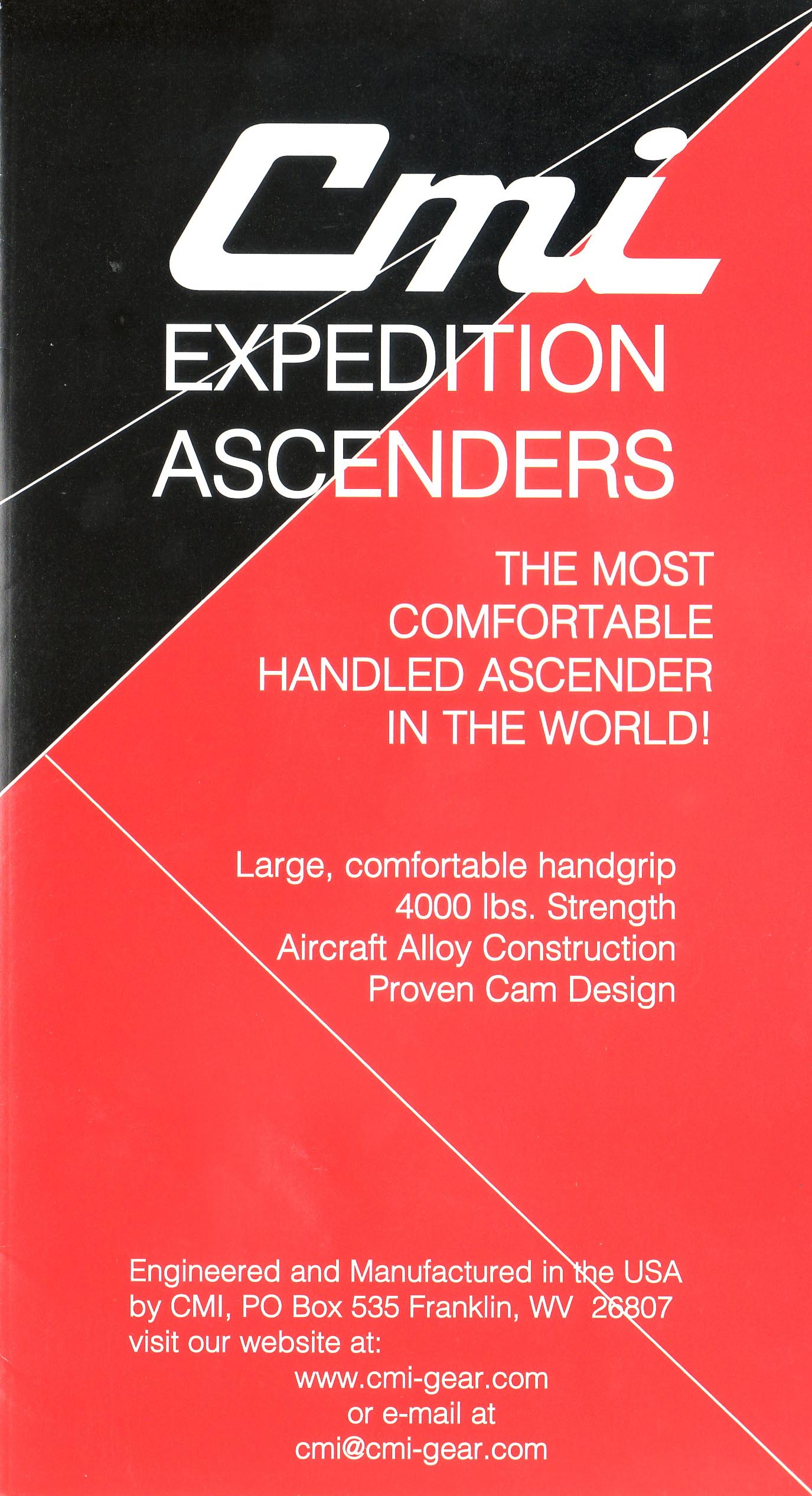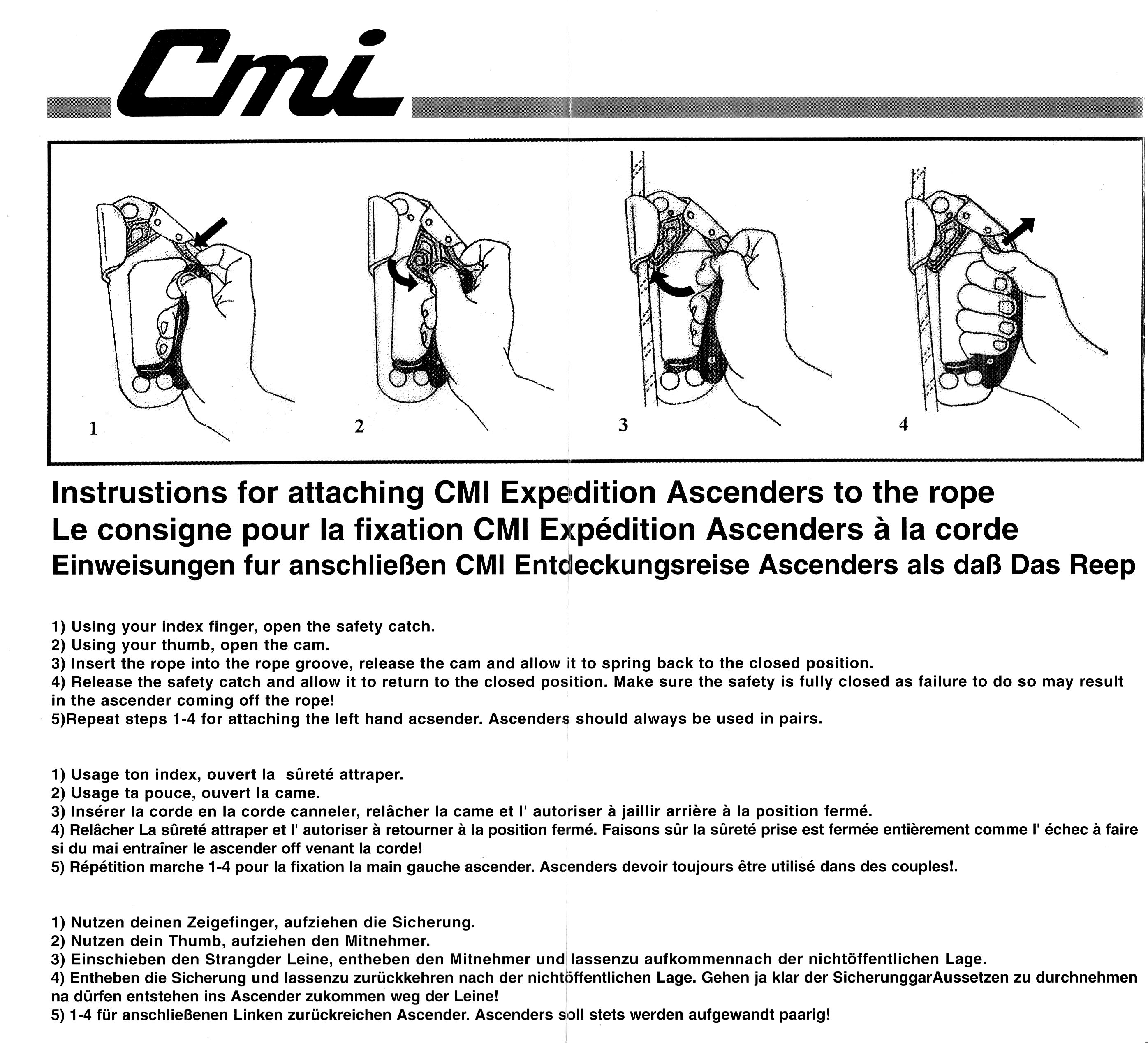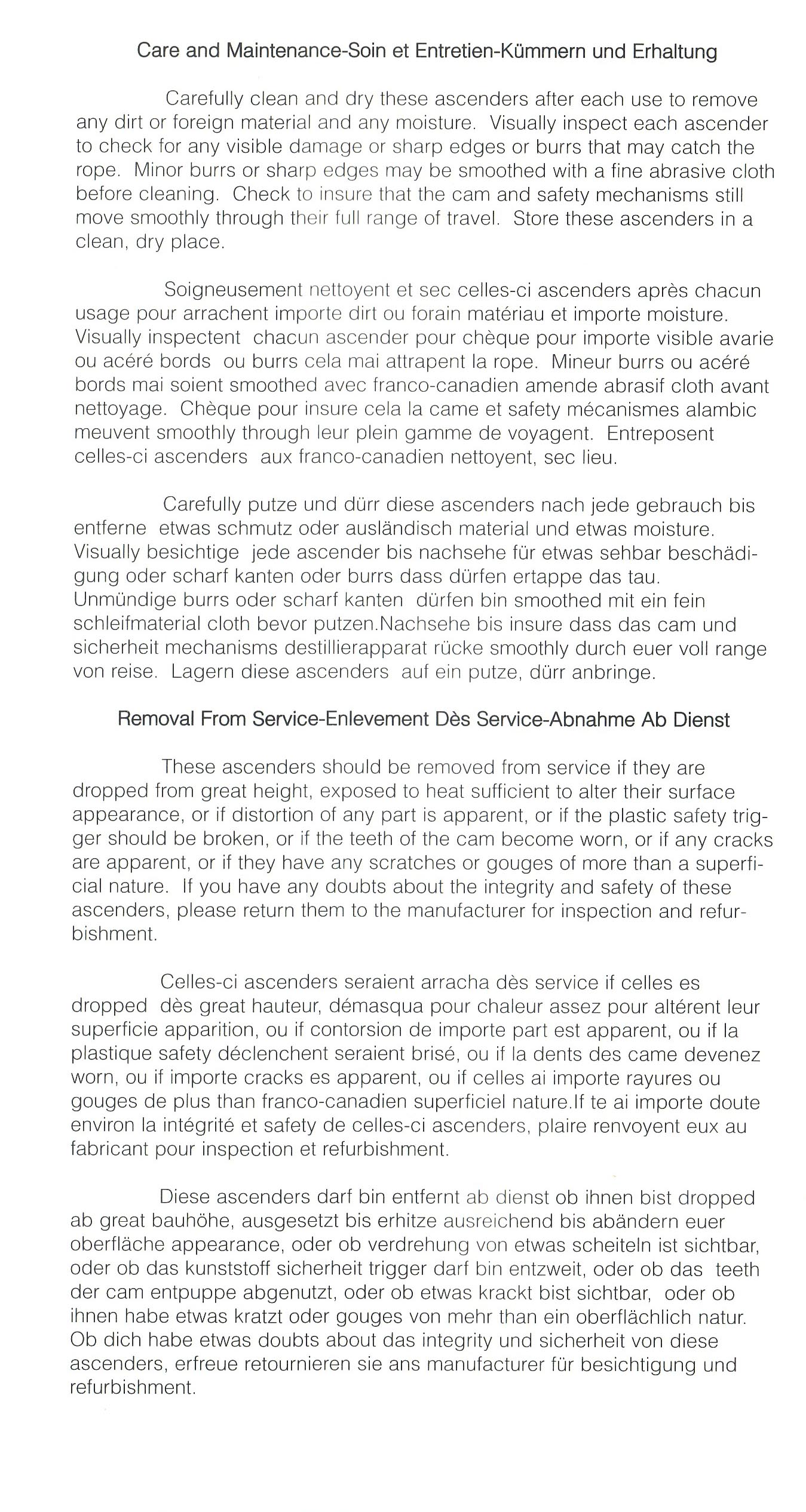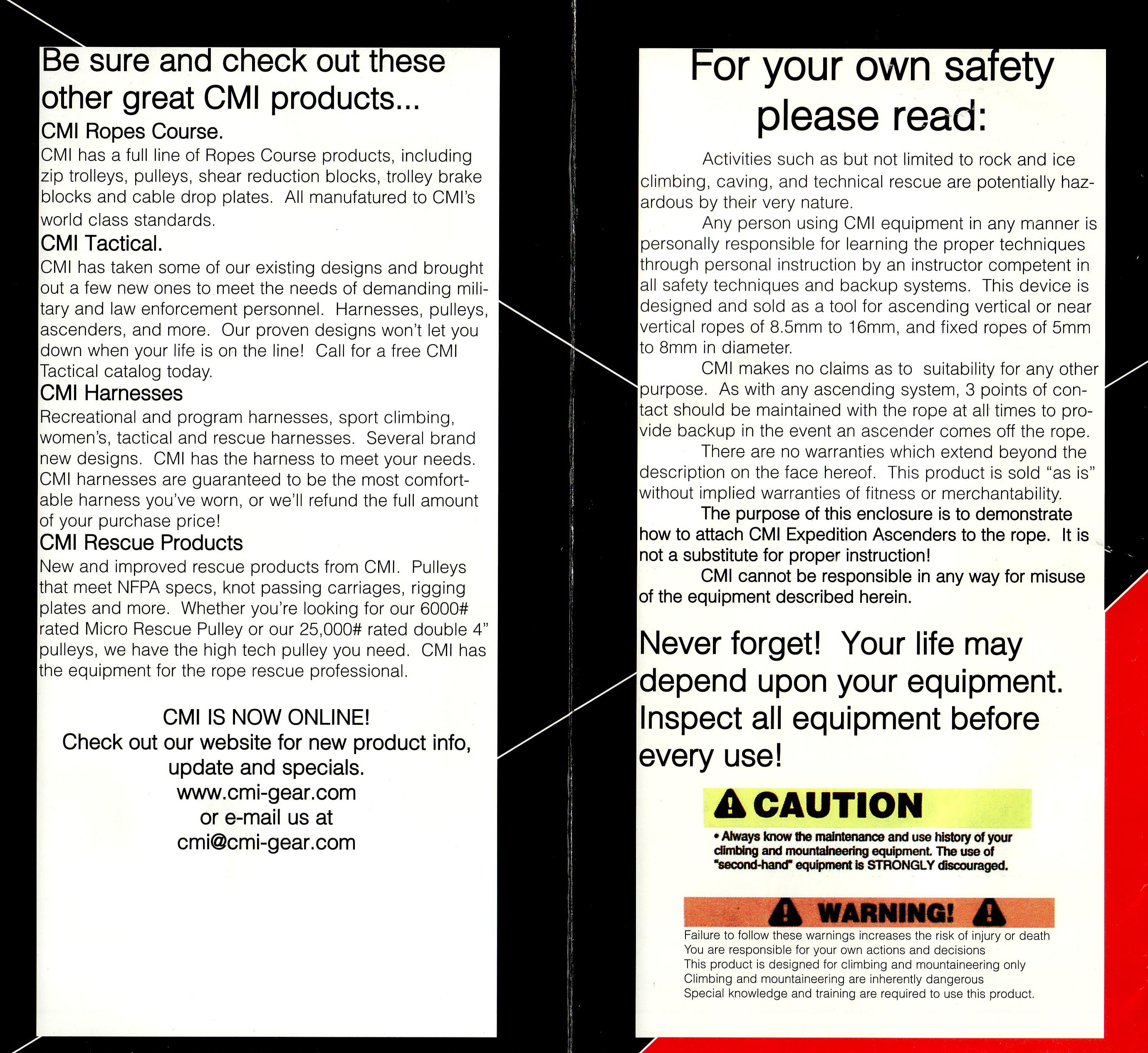Overview
[ Top
| Version B
| Version C
| Return to H.E.C. Ascenders
]
Version A
(#130, 2226)
Technical Details
I acquired this pair from Inner Mountain Outfitters in 1998. I acquired another in 2017 as part of Bob Thrun’s collection, and then three left-handed ones from Kristen Ongoy in 2021.
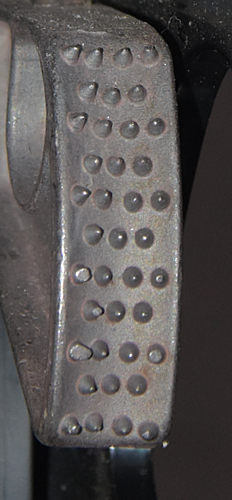 The ascender shell is a roughly "D" shaped piece
of painted 4.2 mm. thick 6061 aluminum bent to form a rope groove
on one side and to hold the cam pivot and safety on the other.
The handle opening is 106 mm. high and 55 mm. wide.
There is a two-piece plastic hand grip bolted to the shell with
three 4.6 mm. cap screws and hex nuts. The left rear and right
front hand grips have round recesses for the cap screws, and hex
nuts fit into hexagonal recesses molded into the left front and
right rear hand pieces. Two 15.9 mm. holes at the base of
the shell serve as a rope attachment points. A third 15.9 mm.
hole provides a means to attach non-load-bearing slings to the
shell above the cam.
The ascender shell is a roughly "D" shaped piece
of painted 4.2 mm. thick 6061 aluminum bent to form a rope groove
on one side and to hold the cam pivot and safety on the other.
The handle opening is 106 mm. high and 55 mm. wide.
There is a two-piece plastic hand grip bolted to the shell with
three 4.6 mm. cap screws and hex nuts. The left rear and right
front hand grips have round recesses for the cap screws, and hex
nuts fit into hexagonal recesses molded into the left front and
right rear hand pieces. Two 15.9 mm. holes at the base of
the shell serve as a rope attachment points. A third 15.9 mm.
hole provides a means to attach non-load-bearing slings to the
shell above the cam.
The cam is a skeletonized steel casting. The conical teeth
are oriented perpendicular to the cam face and are set in a (4.3)^3(4)
pattern. The inner cam face radius reduces from top to bottom
to accommodate various sized ropes. The cam and cam spring are
mounted on a solid 6.3 mm. steel pin. An external retaining
ring holds the pin in place. The cam safety is a plastic lever
mounted on a 3 mm. semi-tubular rivet in the same shell channel as
the cam. A second spring serves as a safety spring. Normally this
spring holds the safety where it blocks the cam from opening.
When the end of the safety lever is depressed, the opposite end
pivots upwards so that the cam is no longer obstructed.
There are no markings on the ascender, but CMI applied two
stickers. One reads "EXPEDITION ASCENDER," "Cmi,"
"Franklin, WV 26807," and "MBS: 3400lb (20.4 Kn)."
The other merely reads "Tested."
Why would C.M.I., who makes the excellent UltrAscenders,
introduce these beasts? For a very good reason. We don't run into
it in caving or rock climbing, but in mountaineering one has to
be able to work their ascenders with mittens on - and I mean big,
clumsy, multi-layered mittens. For many years the Clog
ascenders were the ascender of choice for this niche, but now
C.M.I. has produced some direct competition. I don't consider this
ascender for caving, but for snow and ice, it has a lot going
for it.
The C.M.I. expedition ascender has two tie-in holes at the
bottom, while the Clog has none. The
sling attachment holes could theoretically have the same safety
problem described for the Clog ascender,
so I don't recommend using carabiners in them. The handle on the
CMI is bolted on, and is thicker, so for people with large hands,
it is more comfortable. The safety arrangement is almost identical.
One thing I like is that the cam is held in with a pin secured
by a retaining clip instead of a rivet, so replacing a worn cam
is easy.
As for the stickers, 3400 lb. is 15.1 kN, not 20.4 kN. This was corrected on later stickers.
[ Top
| Version A
| Version C
| Return to H.E.C. Ascenders
]
Version B
(#3431)
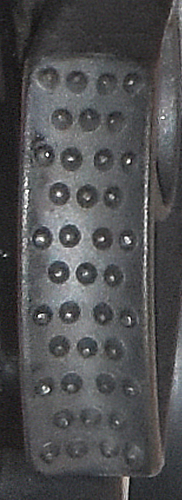 Technical Details
Technical Details
I acquired my CMI Expedition, Version B from Kristen Ongoy in 2021.
Version B is 208 mm. tall, 105 mm. wide, 33 mm. thick, and weighs 264 g.
Version B is identical to Version A except the safety was installed upside-down at the factory.
There are no markings on the ascender, but CMI applied two
stickers. One reads "EXPEDITION ASCENDER," "Cmi,"
"Franklin, WV 26807," and "MBS: 3400lb (20.4 Kn)."
The other merely reads "Tested."
I kind of like the upside-down safety, although there really isn't any significant advantage or disadvantage to it that I can find.
[ Top
| Version A
| Version B
| Return to H.E.C. Ascenders
]
Version C
(#3437)
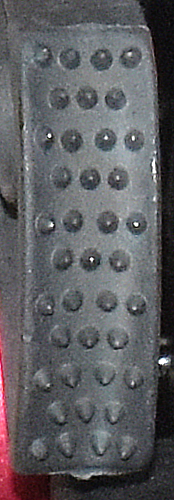 Technical Details
Technical Details
I acquired my CMI Expedition, Version C from CMI in 2021.
Version C is 208 mm. tall, 104 mm. wide, 32 mm. thick, and weighs 259 g. The rope channel is 17 mm. wide. The pivot is centered 53 mm. from the inside of the rope channel. The cam radius increases from 41 to 57 mm. over an angle of 42°, giving a 25° cam angle. The tooth pattern is (4.3)^5(4).
Version C is identical to Version A except the safety is made of anodized aluminum instead of plastic.
There are no markings on the ascender, but CMI applied two
stickers. One reads "EXPEDITION ASCENDER," "Cmi,"
"Franklin, WV 26807," and "MBS: 3400lb (15.1 kN)."
The other merely reads "Tested."
I like the aluminum safety, although I see nothing wrong with the older plastic safety.
CMI corrected the conversion from 3400 lb. to 15.1 kN on the rear stickers.
[ Top
| Version A
| Version B
| Version C
]



